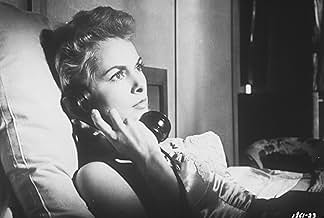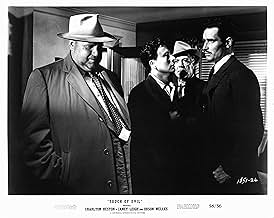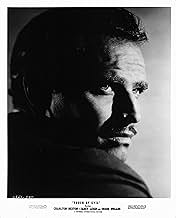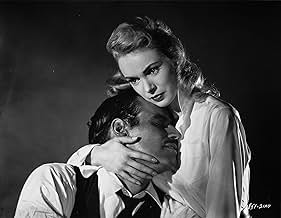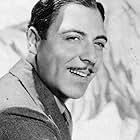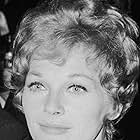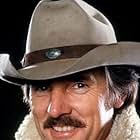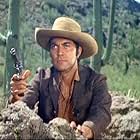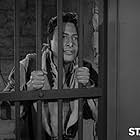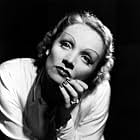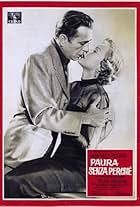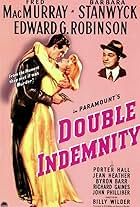Una storia cruda e perversa di omicidi, rapimenti e corruzione in una città al confine messicano.Una storia cruda e perversa di omicidi, rapimenti e corruzione in una città al confine messicano.Una storia cruda e perversa di omicidi, rapimenti e corruzione in una città al confine messicano.
- Premi
- 7 vittorie e 1 candidatura
Valentin de Vargas
- Pancho
- (as Valentin De Vargas)
Trama
Lo sapevi?
- QuizJanet Leigh's agent initially rejected her participation in this film due to the low salary offered without even consulting the actress. Orson Welles, anticipating this, sent a personal letter to the actress, telling her how much he looked forward to their working together. Leigh, furious, confronted her agent telling him that getting directed by Welles was more important than any paycheck.
- BlooperThe car that blows up four minutes into the film has the Texas plate AG 3724; 32 minutes into the film, police car number 10 also has the Texas plate AG 3724.
- Curiosità sui creditiOpening statement (restored version): In 1957, Orson Welles completed principal photography on TOUCH OF EVIL and edited the first cut. Upon screening the film, the Studio felt it could be improved, shot additional scenes and re-edited it. Welles viewed this new version and within hours wrote a passionate 58-page memo requesting editorial changes. This version represents an attempt to honor those requests and make TOUCH OF EVIL the film Orson Welles envisioned it to be. "... I close this memo with a very earnest plea that you consent to this brief visual pattern to which I gave so many long hard days of work." -- Orson Welles
- Versioni alternativeA new version, running 111 minutes, has been restored by Universal and debuted at the Telluride Film Festival in September 1998. This version has been re-edited according to Orson Welles' original vision, as outlined in a 58-page memo that the director wrote to Universal studio head Edward Muhl in 1957, after Muhl took editing out of Welles' hands. The new version has been prepared by editor by Walter Murch, sound recordists Bill Varney, Peter Reale and Murch, and picture restorer Bob O'Neil under the supervision of Rick Schmidlin and film critic Jonathan Rosenbaum. One difference between the two versions is that the famous opening tracking shot is now devoid of credits and Henry Mancini's music, featuring only sound effects.
- ConnessioniEdited into American Cinema: Film Noir (1995)
- Colonne sonoreMain Title (Touch of Evil)
Written by Henry Mancini
Performed by United International Orchestra;
Rolly Bundock (bass); Shelly Manne (drums); Barney Kessel (guitar); Jack Costanzo, Mike Pacheco (percussion); Ray Sherman (piano); Dave Pell (baritone sax); Plas Johnson (tenor sax)Conrad Gozzo, Pete Candoli, Ray Linn (trumpets) ;Red Norvo (vibes)
Recensione in evidenza
There are only two ways to write a review that would truly do this film justice. Either one would have to write an exceedingly long review, or a short, concise one. I choose to do the latter.
When I first saw "Touch of Evil," I was glued to the chair. When I found out it was not Welles' definitive vision, I wondered how on earth it could have been made better. And when I saw the re-released version, I wondered why the studio altered it. The stunning black-and-white images, the intricate plot, and the powerful, engaging performances took a hold of my imagination. At times, I imagined myself on the street with the characters, because the atmosphere was so thick I felt surrounded in it.
The actors all did an outstanding job, especially Leigh and Heston (who, although not thoroughly convincing as a Mexican, soared above his usual powerful, furious presence). This is Welles' picture, however, and whenever the camera catches his obese figure, you are fully aware of the man as a director and an actor. His powerful vision drives the film, from the single-cut opening sequence to the cat-and-mouse finale.
I suggest watching the 1998 restored version over the original theatrical release, but regardless of which version, "Touch of Evil" will have you stuck in your seat, questioning your views of morality until long after the last credit has rolled up the screen.
When I first saw "Touch of Evil," I was glued to the chair. When I found out it was not Welles' definitive vision, I wondered how on earth it could have been made better. And when I saw the re-released version, I wondered why the studio altered it. The stunning black-and-white images, the intricate plot, and the powerful, engaging performances took a hold of my imagination. At times, I imagined myself on the street with the characters, because the atmosphere was so thick I felt surrounded in it.
The actors all did an outstanding job, especially Leigh and Heston (who, although not thoroughly convincing as a Mexican, soared above his usual powerful, furious presence). This is Welles' picture, however, and whenever the camera catches his obese figure, you are fully aware of the man as a director and an actor. His powerful vision drives the film, from the single-cut opening sequence to the cat-and-mouse finale.
I suggest watching the 1998 restored version over the original theatrical release, but regardless of which version, "Touch of Evil" will have you stuck in your seat, questioning your views of morality until long after the last credit has rolled up the screen.
I più visti
Accedi per valutare e creare un elenco di titoli salvati per ottenere consigli personalizzati
Dettagli
- Data di uscita
- Paese di origine
- Lingue
- Celebre anche come
- Touch of Evil
- Luoghi delle riprese
- El Rancho Courson Motel, SW corner of E Barrel Springs Rd and Courson Ranch Road, Palmdale, California, Stati Uniti(Mirador Motel - now site of a residential cul-de-sac)
- Azienda produttrice
- Vedi altri crediti dell’azienda su IMDbPro
Botteghino
- Budget
- 829.000 USD (previsto)
- Lordo Stati Uniti e Canada
- 2.247.465 USD
- Fine settimana di apertura Stati Uniti e Canada
- 70.725 USD
- 13 set 1998
- Lordo in tutto il mondo
- 2.285.063 USD
- Tempo di esecuzione1 ora 35 minuti
- Colore
Contribuisci a questa pagina
Suggerisci una modifica o aggiungi i contenuti mancanti

Divario superiore
By what name was L'infernale Quinlan (1958) officially released in India in Hindi?
Rispondi




